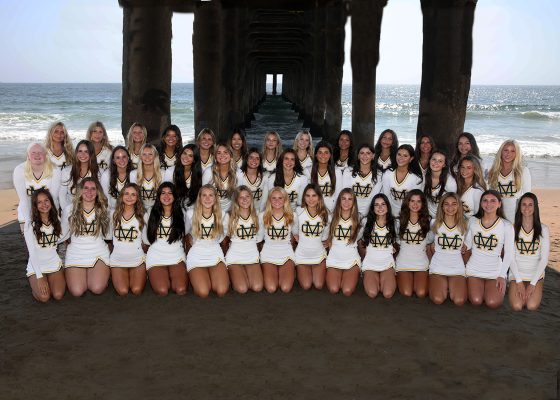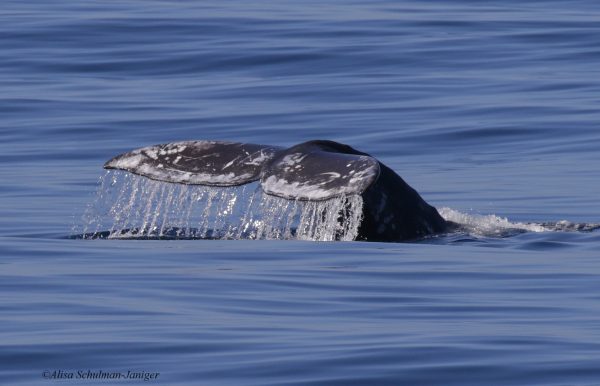
Paul Thomas Anderson’s film adaptation of Thomas Pynchon’s Inherent Vice is up for Best Adapted Screenplay (as well as Best Costume Design), but the film pretty much came and went and is unlikely to become a mainstay of cinematic history. Nonetheless, its South Bay connection is important, and that, at least, will persist.
During the latter 1960s, Pynchon lived at 217 – 33rd St, in Manhattan Beach, where he apparently wrote Gravity’s Rainbow – which, if little else, proves that one doesn’t need to reside in New York City in order to write intense and overwhelming novels.
However, it wasn’t until decades later that Pynchon revisited that time and place with Inherent Vice (2009), which follows a perpetually stoned private investigator named Larry “Doc” Sportello who lives a block from the ocean (4210 The Strand, as the film has it) in the fictional town of Gordita Beach (“Gordita,” or fatty, being an “affectionate” term). That said, if we sat back and smoked a few reefers maybe Gordita Beach would suddenly hover into view, like Laputa or Brigadoon. But until then it sort of floats like a transparent overlay somewhere near Hermosa, Redondo, Manhattan, El Porto, as elusive as the era it depicts.
Somewhere around one-third of the way through the novel there’s that first impression that one’s likely to run aground during any attempt to comprehend the big picture. Although Anderson’s film (a director known for “Boogie Nights” and “There Will Be Blood”) tells us right off the bat that the year is 1970, in the novel one needs to scratch around for clues. And as for the exact age of our protagonist, there’s half a line – “and the instant Doc turned thirty, which would be any minute now…” – that gives us the feeling that Doc Sportello’s twenties and the 1960s are going out the back door at about the same time.
I’d say all this is significant, because the book (and the film) as a whole has that edging-over-the-hill, post-hippie or post-flower child vibe to it, which was largely pushed off its pedestal when the Manson murders came to light and when four students were shot dead at Kent State. There’s a “Maginot line” here, with Beach Boys innocence on one side of it and an overdose of Bukowski/Big Lebowski waiting on the other. And so Inherent Vice reads more like zoned-out Dashiell Hammett than fresh-faced Rod McEuen.
Most thrillers or whodunits want to keep us dangling until the last page, but Inherent Vice – which also reads as if Terry Gilliam got his thumbs on it – empties a grabbag of characters into the story who then scamper off in different directions. We run after this one, stop, then that one, and maybe one of Pynchon’s aims was to induce in the reader the same sort of confusion and mental fog that Doc himself needs to wave aside and wade through.

The story has several key threads, one being that Shasta Fay Hepworth, an old girlfriend (and formerly the beauty queen at Playa Vista High School), shows up like a mirage and solicits Doc’s help: She’s been having an affair with a billionaire real estate developer named Mickey Wolfmann who’s suddenly had a change of heart and now, instead of hoarding money, wants to give it away in the new-found belief that housing should be free. His wife, Sloane, and her lover (“my spiritual coach,” yeah right) Riggs Warbling, plan to derail Wolfmann’s intentions, and they’re wanting Shasta to help. Or, as she puts it, “Doc, I’m just the bait.”
Shasta disappears, Wolfmann is abducted, one of his bodyguards named Glen Charlock is killed, and soon the floodgate of L.A. characters opens up and this includes Doc’s beach area friends Spike and Sortilege and Denis, Dr. Buddy Tubeside and his assistant Petunia Leeway (with whom Doc share office space), Aunt Reet (a realtor who lives in the Tree Section “on the other side of the dunes”), Perry Kimball (a deputy DA who works downtown, and with whom Doc is having an affair), Tariq Khalil (a friend of Glen’s), Sauncho Smilex (Doc’s lawyer), Jade and Bambi of Chick Planet Massage, Clancy Charlock (Glen’s sister), and then Hope Harlingen and her toddler daughter Amethyst.
The latter – Hope, not Amethyst – has reached out to Doc because she’s been informed that her husband, saxophonist Coy Harlingen, has died. However, she was never allowed to ID the body and she’s begun to think that he’s still alive. Searching for Coy becomes another thread that gets entangled with looking for Mickey Wolfmann, and then there’s a somewhat indecipherable cop named Lt. Christian Bjornsen who goes by Bigfoot throughout the book, presumably on account of his kicking down doors when making an arrest.

Bigfoot, clean-shaven with a crewcut, is the polar opposite of Doc Sportello, and yet they manage to have some kind of symbiotic relationship.
All the above characters are in the film as well, along with Japonica Fenway and her father Crocker Fenway, Dr. Rudy Blatnoyd, Adrian Prussia (a hitman, basically) and his pitbull of a bodyguard Puck Beaverton.
Anderson, the film director, clearly had his hands full with these characters, and maybe a couple of others I forgot to mention – like the FBI detectives Borderline and Flatweed – but he has also, and I would say wisely lest the raft artistically capsize, jettisoned an entire sequence set in Las Vegas that throws in another eight or ten major minor characters: Tito Stavrou, Boris Spivey and his girlfriend Darnette, stewardii Lordes and Motella, Trillium Fortnight, Fabian Fuzzo, Jason Velveeta, and… well, that’s enough. Even with their distinctive, and one might add silly, names, adding these characters to the cinematic mix would only muddy up the waters even more.
The book has or had been pronounced “unfilmable,” and ironically the motion picture itself proves this is true, for the most part. It’s really too hard to follow, except superficially, and if you ask someone who hasn’t read the book – and I did this – what they thought of such a character in such a situation you’ll find that they really don’t know. In most cases, there’s a backstory you’ll only find in the book, but then again there’s a further backstory for all characters – and it’s probably afloat in the Pacific.
However, I think if one carefully maps out each and every detail and then rereads the novel a second or third time, clarity will shyly raise its head. But only to a point. And I haven’t even mentioned the part in the book where Doc imagines a conversation between himself and a picture of Thomas Jefferson while his clients Clancy and Tariq are off using the restrooms.
And yet, speaking of clarity, the book is loaded with crisp, wry humor, much of it interjected into the film but so subtly that audiences may not catch it, as when – having lunch with Sauncho Smilex in the harborside Belaying Pin – Doc orders jellyfish teriyaki croquettes and Eel trovatore (hint: think of Verdi’s opera “Il trovatore).
I mentioned Dashiell Hammett early on, and I could have mentioned Raymond Chandler as well as other 1940s noir writers. Pynchon’s descriptions evoke the literary style that these gentlemen are famous for. Two examples, taken from pretty deep in the novel:
“Inside, the woman at the front counter gave Doc the impression of having been badly treated in some divorce settlement. Too much makeup, hair styled by somebody who was trying to give up smoking, a minidress she had no more idea of how to carry than a starlet did a Victorian gown.” And also: “He wore a sky blue suit of some knit synthetic with a slovenly drape to it and a Rolex Cellini which didn’t seem to be working, though that didn’t keep him from consulting it now and then to let visitors know how much of his time they were wasting.”
This stuff’s funny and witty, but I’m not sure this is rope strong enough to pull us all the way across and through the book.

Last things first, a compelling reason to read the novel and catch the film is that – Gordita Beach existing or not – its neighboring cities do, and that means numerous mentions of Hermosa, Redondo, Manhattan, Torrance, Palos Verdes, and even little Lomita, where Jim Thorpe, All-American, ended his days. A few of the streets are real: Hawthorne, Sepulveda, Rosecrans; but when we get closer to Doc’s own domicile we found ourselves in Dalíland, meaning Beachfront Drive (which seems a little like Highland), Dunecrest, Gordita Beach Blvd., and nearby Gummo Marx Way.
Don’t expect place names to help you out: Doc eats up the street at Wavos, Pipeline Pizza, Epic Lunch, Screaming Ultraviolet Brain, Sunnyside Slick’s Deli, and Man of La Muncha. One of the few genuine locations is the Lighthouse Cafe on Pier Avenue, Hermosa Beach. However, the neighboring Cove, later Bijou, is called the Hermosa Theater. Anyway, maybe that’s the idea, to give us a slightly skewed, alternative-reality South Bay. After all, this is kind of a backhand paean to the twilight era of the psychedelic Sixties.
Perhaps towards that end, too, Pynchon drops in a lot of names of bands that have largely vanished from memory, and if you’re able to recognize most of them then you could also be about to drop into the well of history: The Chantays, The Trashmen, The Bel-Aires, The Marketts, Eddie and the Showmen, Tommy James and the Shondells, and The Electric Prunes. Are any of these familiar to you? If so, put me in your will before you go to bed tonight.

Paul Thomas Anderson rounded up a remarkable cast – Joaquin Phoenix as Doc Sportello, Josh Brogan as Bigfoot, Owen Wilson as Coy Harlingen, Benicio Del Toro as Sauncho Smilex, Reese Witherspoon as Penny Kimball, Martin Short as Rudy Blatnoyd, and an appealing Katherine Waterston as the elusive Shasta – but despite some great performances the film is still too confusing, a little too long, and it’s hard to make an emotional connection with any of the characters as you may have done with other year-end films, whether it’s “Birdman” or “Foxcatcher,” “The Theory of Everything” or “The Imitation Game” – which is one reason they’ve been talked about so much.
The result? It’s a mixed blessing, at best, but whatever footprint “Inherent Vice” leaves on the wet summer sand will likely be swallowed up by the incoming tide.
By the way, what did linger, at least for a few days, were some of the songs, specifically Sam Cooke’s “Wonderful World,” Kyu Sakamoto’s “Sukiyaki,” and Neil Young’s “Harvest.” Then they drifted away, kind of like Brigadoon.










